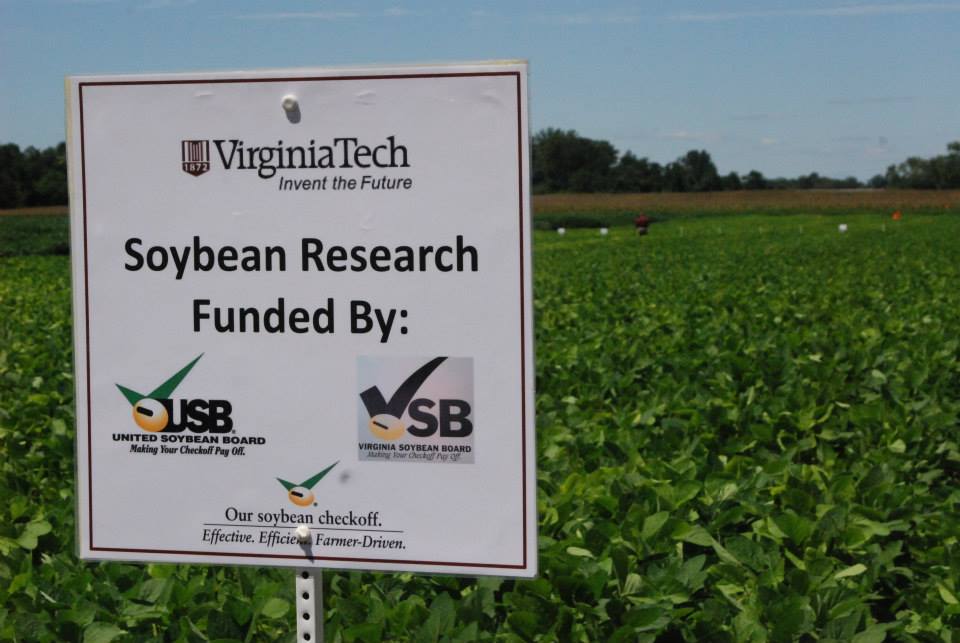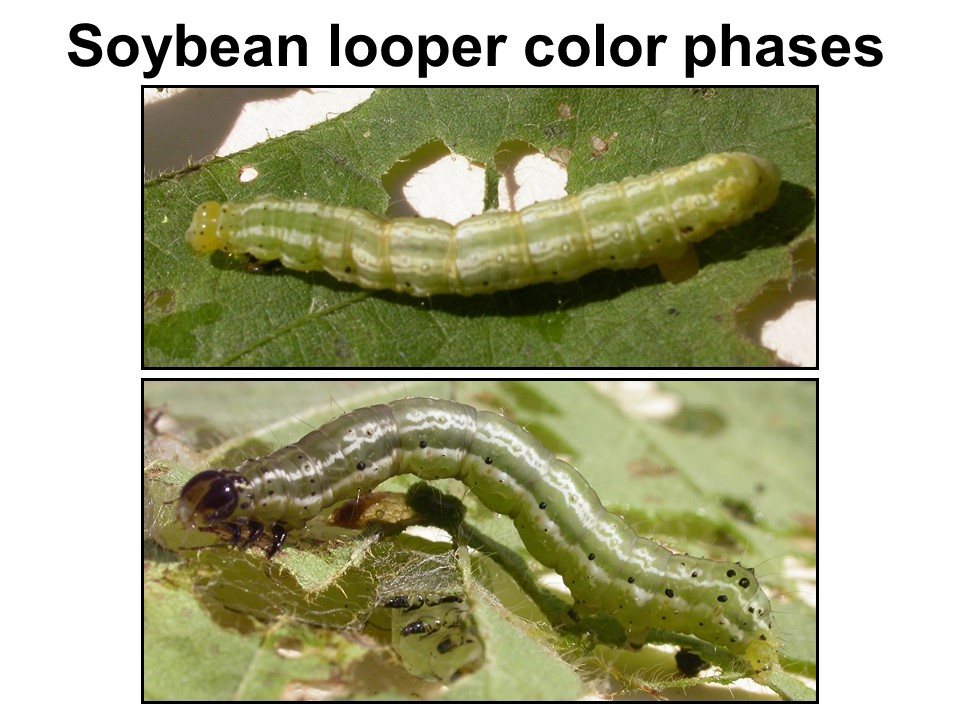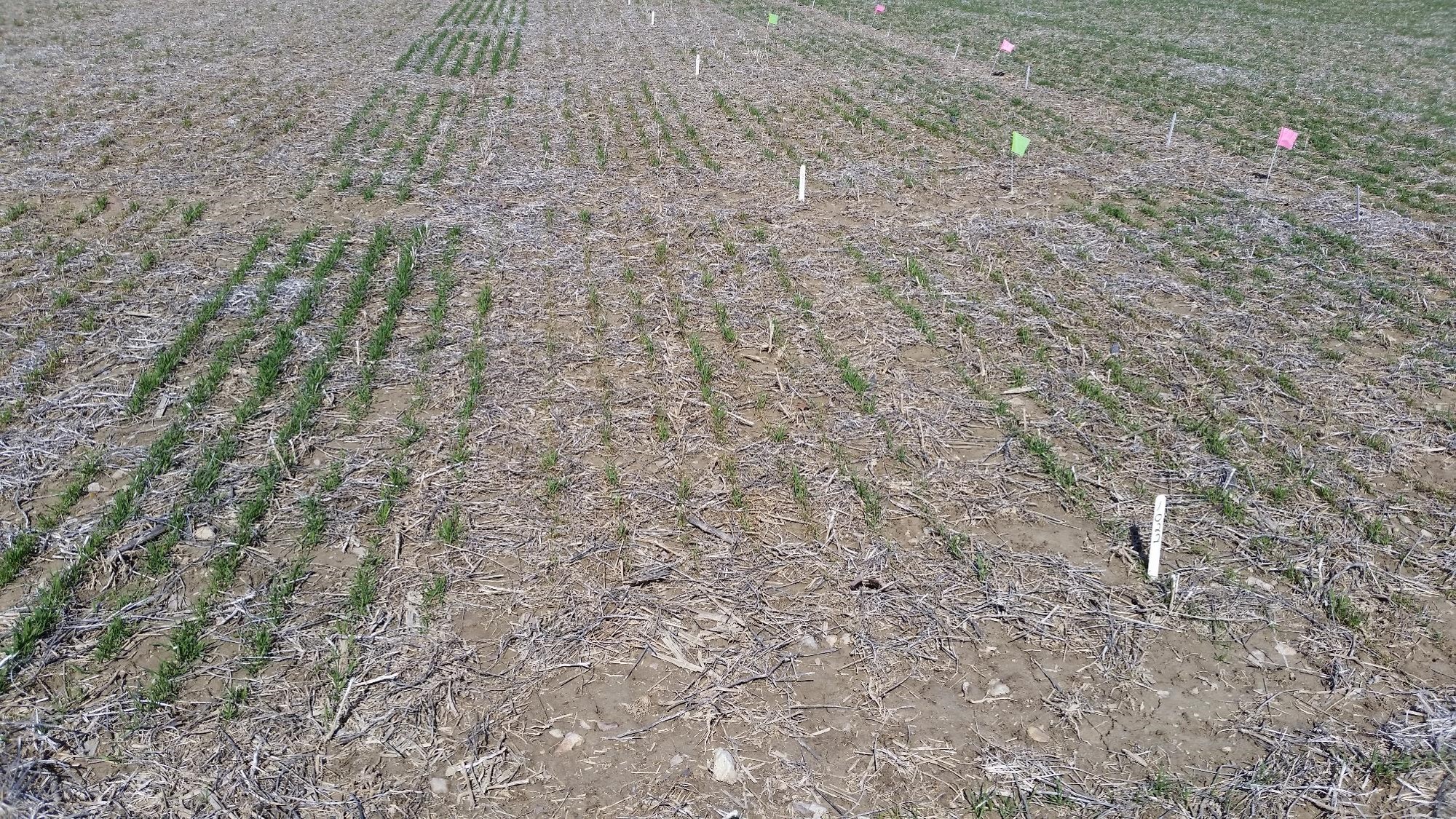Our scouts are reporting low numbers of kudzu bug adults in soybean (zero to 2 per 15 sweeps). Please refer to the map for locations where they have been found to date.
Category Archives: Commodity
Brown marmorated stink bug distribution map update for August 19, 2015

The Virginia Soybean Field Day is this Thursday
VIRGINIA SOYBEAN FIELD DAY
Thursday August 20, 2015
Eastern Virginia Agricultural Research & Extension Center
2229 Menokin Road
Warsaw, VA 22572
(804) 333-3485
Sponsored by
Virginia Soybean Association
Virginia Agricultural Experiment Station
Virginia Cooperative Extension
Join us to see the latest research on soybean varieties, disease and weed management, IPM and sorghum varieties. Experts will also demonstrate no-till drill maintenance and update you on the mid-Atlantic double crop initiative. Registration begins at 8:00 am and field tours begin at 8:50 am. The program will end at noon with a delicious meal by Nixon Catering.
Topics include:
– Soybean Disease Management – Dr. Hillary Mehl
– Soybean Weed Management – Dr. Mike Flessner
– Soybean Insect IPM – Mr. Mike Parish and Drs. Sean Malone and Ames Herbert
– No-Till Drill Maintenance – Mr. Keith Burgess
– Grain Sorghum Management – Dr. Joseph Oakes
– Roundup-Ready Public Soybean Varieties – Dr. Bo Zhang
– Mid-Atlantic Double-Crop Soybean Initiative – Dr. David Holshouser
We hope to see you there!
Bollworm treatments may be needed in Virginia cotton
As of last week, we found bollworm eggs in cotton fields in numbers high enough to indicate that fields may need to be treated. The bollworm (= corn earworm) moth flight from corn is light and spotty, but it does not take many moths to cause concern in cotton.
In the old days before Bt cotton, we relied on the two spray system to control bollworms—the first spray applied at egg threshold followed by an automatic second spray 5 to 7 days later. This system worked very well to protect cotton from economic levels of boll damage.
With the advent of Bt cotton varieties (now TwinLink, BG2 and WideStrike) we found that even with these technologies, there were enough worm escapes (worms not killed by feeding on the plant toxins) to warrant a single insecticide spray. And—we determined that the best time for that single worm spray coincided with the second of the original two spray system—i.e., 5 to 7 days after the egg threshold.
Egg thresholds were found towards the end of last week in fields near the Tidewater AREC. The same is likely happening in fields across the region. So now is the time for applying a bollworm treatment. Based on our history of bollworm resistance to pyrethroids, the best control results will be obtained using a non-pyrethroid (e.g., Steward, Belt, Prevathon, Blackhawk). But we also recommend adding a pyrethroid to clean up any stink bugs that may be in the cotton. There are several pyrethroid options, and I would use the highest labelled rate for stink bugs—better kill and longer residual. Besiege is the only product that contains both the non-pyrethroid (= Prevathon) with a pyrethroid (= Karate). With all the other non-pyrethroids, you will have to do the tank mixing on the farm. And, it is past time to include any of the insecticides from the neonicotinoid class as they do not provide good control of either bollworms or stink bugs.
Brown marmorated stink bug distribution update for August 6, 2015
Our scouts found a BMSB nymph in Franklin County soybean this past week. Populations in soybean remain low; please also see the black light trap report. Here is the map of all 3 counties where BMSB have been detected in soybean in 2015: BMSB_map_6_Aug
Kudzu bug distribution update for August 6, 2015
Kudzu bug has been found in soybean in 30 Virginia counties. Most populations were low (zero to 2 adults per 15 sweeps), although a field in Pittsylvania at R2 growth stage had an average of 13 kudzu bugs per sample. Please see the data table for recent samples (kb_data_6_Aug) and the state distribution map (KB_map_6_Aug) for more details.
Soybean loopers are infesting soybeans in North Carolina
I have gotten reports that soybean loopers are already infesting soybean fields in North Carolina in large numbers. This is basically about a month earlier than we normally see them in this area of the US. Loopers migrate from the south and typically infest fields in Virginia in early to mid September, but based on what is happening in NC, we should be on the lookout.
We are also in a high risk environment for having looper infestations. We usually have more problems with them in dry seasons, and they most often develop in soybean fields that have been previously treated with pyrethroids. Our current research is proving what we have been suspecting—that pyrethroids are non-selective insecticides which kill many of the natural enemy species that feed on looper eggs and small larvae—which if undisturbed, can prevent outbreaks in many situations. So previously treated fields are at the highest risk to loopers.
If we begin to hear about infestations in Virginia, we will post updates and include some recommendations in terms of thresholds and products that will work best. But generally, you cannot get control of loopers with pyrethroids—none of them—so you will have to turn to non-pyrethroid options, and there are several.
TriCor Receives Registration for use in Wheat and Barley
The herbicide TriCor, a metribuzin product from United Phosphorus Inc., has received 24(c) registration (special local needs) for use in Virginia for control of Harmony and Harmony Extra (group 2 herbicides) resistant common chickweed. The supplemental label is here: TriCor DF Herbicide 24(c) VA label. This is good news for small grains growers.
Research by Drs. Scott Hagood and Michael Flessner indicate that TriCor at 2 oz/a results in excellent common chickweed control when applied in fall or spring, with no significant injury to wheat. However, wheat injury can be a concern. Using crop oil concentrate or vegetable oil surfactants with TriCor increases the risk of crop injury, as well as when applying with fertilizer in combination with TriCor. Growers should select wheat and barley varieties that are tolerant of metribuzin if planning on using TriCor as certain varieties are more sensitive to metribuzin than others. Seed dealers may have information regarding metribuzin tolerance. Additionally, preliminary nonreplicated wheat variety sensitivity research by Drs. Wade Thomason, Carl Griffey, and Michael Flessner is included in this publication: https://pubs.ext.vt.edu/CSES/CSES-129/CSES-129-PDF.pdf. See pages 99 to 101.
Always make sure to read and follow the product label. Also note that TriCor is the only stand-alone metribuzin product legal for this use.
Update on soybean insect pests in Virginia
In mid July we initiated our annual soybean insect pest survey, our black light trapping program, and our corn earworm pyrethroid resistance monitoring program. Following are short updates.
BMSB (brown marmorated stink bug): So far this summer, only a TOTAL of 4 BMSBs have been found in soybeans—one in a field in Amelia Co. and 3 in a field in Bedford Co. (see the attached BMSB occurrence map). This breaks all records for the fewest for this time of year. Was it the cold winter, or those unusually hot days in June (BMSB does not do well when temperatures exceed the mid 90s)? We will continue posting our field survey results but all indicators point to a season with very low risk to BMSB infestations in the Virginia soybean crop. BMSB_map_30_July_2015
Kudzu bug: As of the end of July, kudzu bugs have been found in soybean fields in 21 southern/eastern counties (see the attached kudzu bug occurrence map)—but in all cases, these have been adults only, and at very low numbers. Most counts reported by our scouts were 1 or fewer adults in 15 sweeps, and occasionally 2 per 15 sweeps. These numbers are way too low to be a threat to fields and DO NOT warrant treatment. These adults represent the first generation that will set up the nymphs that could cause concern later, but only if numbers increase a lot. Our best guess based on what we are seeing in fields now, and the lower number that successfully overwintered compared with last year, is that not many, if any, fields that will reach the nymphal threshold. KB_map_30_July_2015
Corn earworm moth activity: We are seeing an increase in CEW moth activity just in the last week and what we think is the beginning of the flight from field corn. Our local pheromone traps have gone from just a few caught in a week, to averaging in the teens and twenties. We are just beginning to see moths fly up in crop fields as we walk the rows, and some local growers are seeing the same. On a separate advisory we have posted the results of the annual corn earworm field corn survey—which showed a statewide average of only 17.5% ears infested. This is even lower than the numbers reported in 2014 (20%) and 2013 (18%)—both years with very few cotton, peanut or soybean fields being infested with treatable numbers of worms. So far, all indicators point to another year with few fields reaching thresholds. We will continue monitoring and posting updates.
Corn earworm pyrethroid resistance: To date we have tested 255 moths (see the attached line graph). We started the season with about 15% survivorship at the end of June and as of the end of July are up to 40% survivorship. This level, this early in the season is cause for some concern. We will be posting updates often. Vial_tests_30_July_2015
Corn disease update — July 28, 2015
In an update to my previous post, southern corn rust has now been confirmed in Chesapeake, VA. This is a few days earlier than in 2014 (August 3), but most of the field corn in the region is mature enough (dent stage) that yield should not be impacted. Late planted corn in fields with good yield potential (120 bu/ac +) may need to be protected with a foliar fungicide. Strobilurins are good preventative fungicides whereas triazoles are recommended once sporulation is observed in a field due to their curative activity. A combination fungicide is a good option as long as a strobilurin fungicide has not been applied previously. Wet, warm weather favors disease development. Once sporulation occurs, symptoms of rust are relatively obvious. Lesions start out as raised, blister-like pustules then break open to reveal orange spores. Samples of corn plants with symptoms of southern rust can be submitted to the disease clinic at the Virginia Tech Tidewater AREC (contact Dr. Hillary Mehl, hlmehl@vt.edu).



